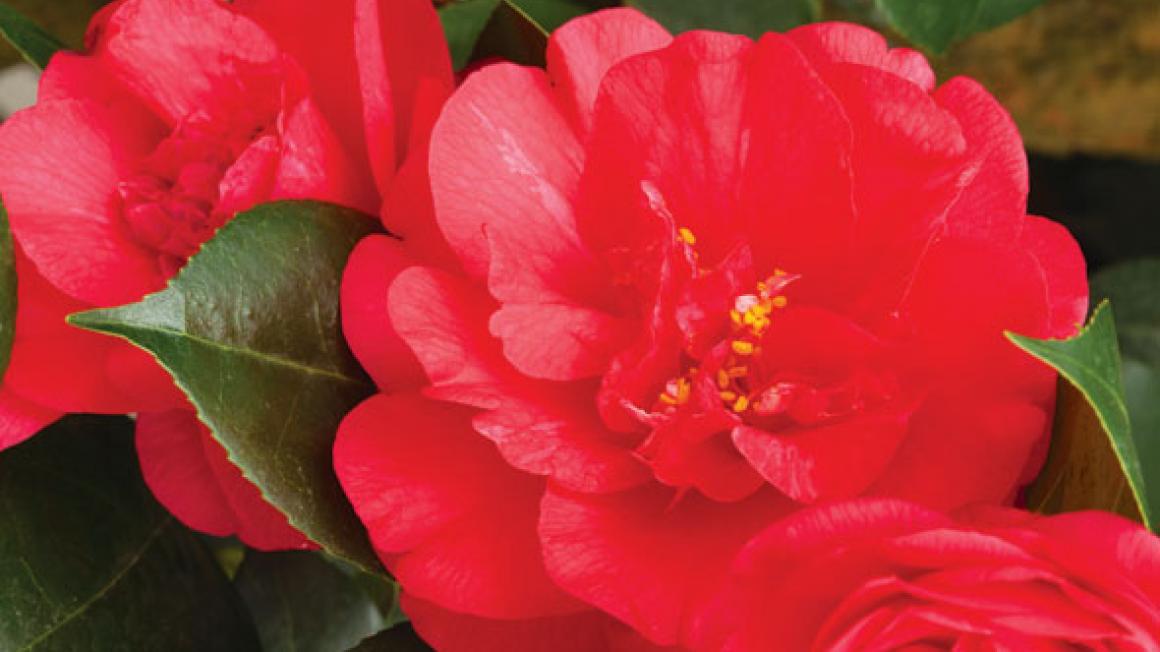Blooming beautiful
The story begins in 1813 when the 6th Duke of Devonshire, the ‘Bachelor Duke’, commissioned his elegant conservatory from Samuel Ware. In 1814, a semicircular Italian Garden, now beautifully restored, was laid out in front of it. Originally, the conservatory was used for growing fruit – vines, peaches, figs and possibly pineapples in the end pavilions. In 1828, the duke decided to replace them with the newly fashionable camellias that were being introduced from China, Japan, Korea and Vietnam. Initially, the camellias were probably planted in pots, and then, from 1855 when the conservatory was modernised, in the permanent beds in which they are still grown.
The conservatory was damaged by bombs in the Second World War and fell into decline in the last years of the 20th century. In 1994, three local members of the International Camellia Society stepped in to provide emergency care. The plants had shed nearly all their leaves and were covered in sooty mould. An emergency programme of pruning, feeding and spraying with fungicide was launched. This ensured the camellias’ survival while Chiswick House Gardens were being restored, a process completed in 2010. Meanwhile, research by Herb Short of the International Camellia Society, which involved trawling through the ships’ logs of the East India Company, revealed that the plants they had rescued were among the oldest and rarest to be found, ‘a library of first editions’, as he put it.
On a mild but rainy day a few weeks ago I met Peter Oates, the garden manager, for a tour of the conservatory in advance of the fourth annual Camellia Festival to be held next month. Because of the lack of cold weather, many of the camellias were starting to flower, and windows were open wide to let in cold air to hold them in check. Peter took up his post at Chiswick in 2012; as a Cornishman he knows a lot about camellias. He manages this huge and wonderful garden with two fulltime gardeners and lots of volunteers – some 60 of them, known as the ‘goose-foots’ after the patte de’oie, the three pathways that fan off the main axis of the gardens.
Peter has subjected the camellias to pruning in two stages. ‘They were so overgrown that people were brushing against them and taking pests and disease from one plant to the next.’
In the first phase, dead and diseased wood was pruned out, and this year after flowering, the trees will be opened out to provide layers rather than a wall of colour. The trees are grown under glass because the plant collectors, who discovered them in hot, humid countries, assumed they were tender.
In fact, says Peter, they are more difficult to grow in a glasshouse because pests and diseases can more easily overwinter. The plants are looking immaculate, with glossy leaves. ‘Every leaf cleaned by hand by the volunteers,’ said Peter. His favourite camellia is the rarest of them all, ‘Middlemist’s Red’, originally brought to Britain from China in 1804 by John Middlemist, a nurseryman from Shepherd’s Bush. Despite its name, the flowers are deep pink. I recommend a visit; don’t miss the festival shop and the striking café – it won the RIBA London Building of the Year Award in 2011.
Chiswick House Camellia Festival 2014, Chiswick House, London W4. 1 to 30 March: 020-8742 3905; www.chgt.org.uk


